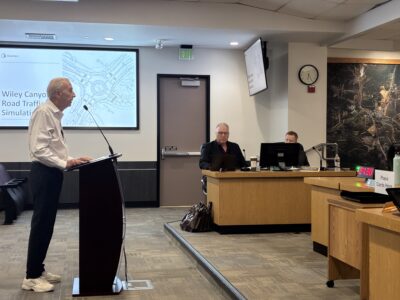This week, Gov. Gavin Newsom signed legislation that could have a huge impact on the Santa Clarita Valley’s future: two laws that make the most significant reforms ever to the state’s decades-old environmental review process.
The California Environmental Quality Act creates a standard of review for the impacts of any construction project on its surroundings. For years, its opponents have accused environmentalists and union interests of “weaponizing” the law to stop projects they don’t like.
The changes could have a significant impact on the city of Santa Clarita and its surrounding areas because the local housing assessment calls for approximately 10,000 homes to be approved by the end of the decade. The city has seen a growing number of such projects in recent months as the state has encouraged local governments to approve more housing.
The new laws encourage new construction by exempting any “infill” development smaller than 20 acres from the CEQA environmental review process.
Recent infill examples in Santa Clarita include River Walk, plans for 150 two-story townhomes, 8,500 square feet of commercial space and 2,500 square feet of recreational space off Soledad Canyon and Solamint roads; the Hartwell, plans for 78 condos and 5,200 square feet of retail space on Main Street in Old Town Newhall; and the Newhall Avenue Mixed Use Plan, which calls for 106 apartments and a single-story, commercial building on an approximately 9.7-acre hillside property at 23755 Newhall Ave.
There are a number of potential impacts to the city, but the first mentioned by city officials was the CEQA exemption for “infill” projects less than 20 acres in size, according to Jason Crawford, community development director for the city, referring to plans for already developed areas.
“We are still looking into the specific details,” Crawford said via text, adding the bill was signed Monday.
Newsom was credited with the reform passed via a “poison pill” that would have nullified the budget if one of the reforms, Senate Bill 131, didn’t pass, according to a June 30 CalMatters article. The deal was made Monday, which also called for passage of a companion bill, Assembly Bill 130.
Sen. Suzette Valladares, R-Acton, had no vote recorded for AB 130 when it was on the Senate floor, and voted in favor of SB 131. She was not immediately available to comment Thursday.
Assemblywoman Pilar Schiavo, D-Chatsworth, voted in favor of AB 130, but had no vote recorded for SB 131, after initially voting no.
“Since being elected, making life more affordable for our community has been a priority, and we know that housing prices are way too high in part because we can’t build fast enough and in part because building delays just raise costs,” Schiavo wrote in a text message Thursday. “While certainly not perfect, I voted for AB 130 because it’s the most significant updates to CEQA in years that will cut red tape and lead to more affordable housing production, to less spent on bad-faith lawsuits.
“On SB 131, I shared the view of some of my Republican colleagues that the bill wasn’t quite there yet. I know there has been a commitment to address concerns raised in the last-minute process and broadness, and I look forward to reviewing those improvements to the legislation in the future. There is still more we can do to streamline construction in this state.”
The two bills, which drew an angry response from California’s environmental groups, “create 10 new CEQA exemptions to streamline approvals for housing, as well as child care centers, clean water infrastructure, climate adaptation projects, broadband, health clinics, advanced manufacturing, and much more,” according to a statement Monday from Sen. Scott Weiner, D-San Francisco, one of the bill’s co-authors.
Newsom called the $321 billion “a budget that builds,” in his statement announcing the CEQA reforms, which become effective immediately.
“In addition to the Legislature, I thank the many housing, labor and environmental leaders who heeded my call and came together around a common goal — to build more housing, faster and create strong affordable pathways for every Californian,” he wrote in the statement. “Today’s bill is a game-changer, which will be felt for generations to come.”
Some of the recommendations that made it to the bill came from a May 2024 report from the Little Hoover Commission, which made six recommendations, including the CEQA exemption of infill projects.
In May, the Planning and Conservation League called the effort to reform the 55-year-old law signed by then-Gov. Ronald Reagan a “monumental undermining of California’s environmental bill of rights” through a “backroom deal hearing.”
“Currently, an (environmental impact report) must be prepared when there is a fair argument, based on substantial evidence, that the project would have a potentially significant impact — in other words, if there’s a solid reason to believe that the project could result in significant harms, the agency must study those harms in an EIR,” according to the PCL, adding these reforms turn that standard “upside down” and would allow local agencies to “cherry pick” the information presented to the public.







